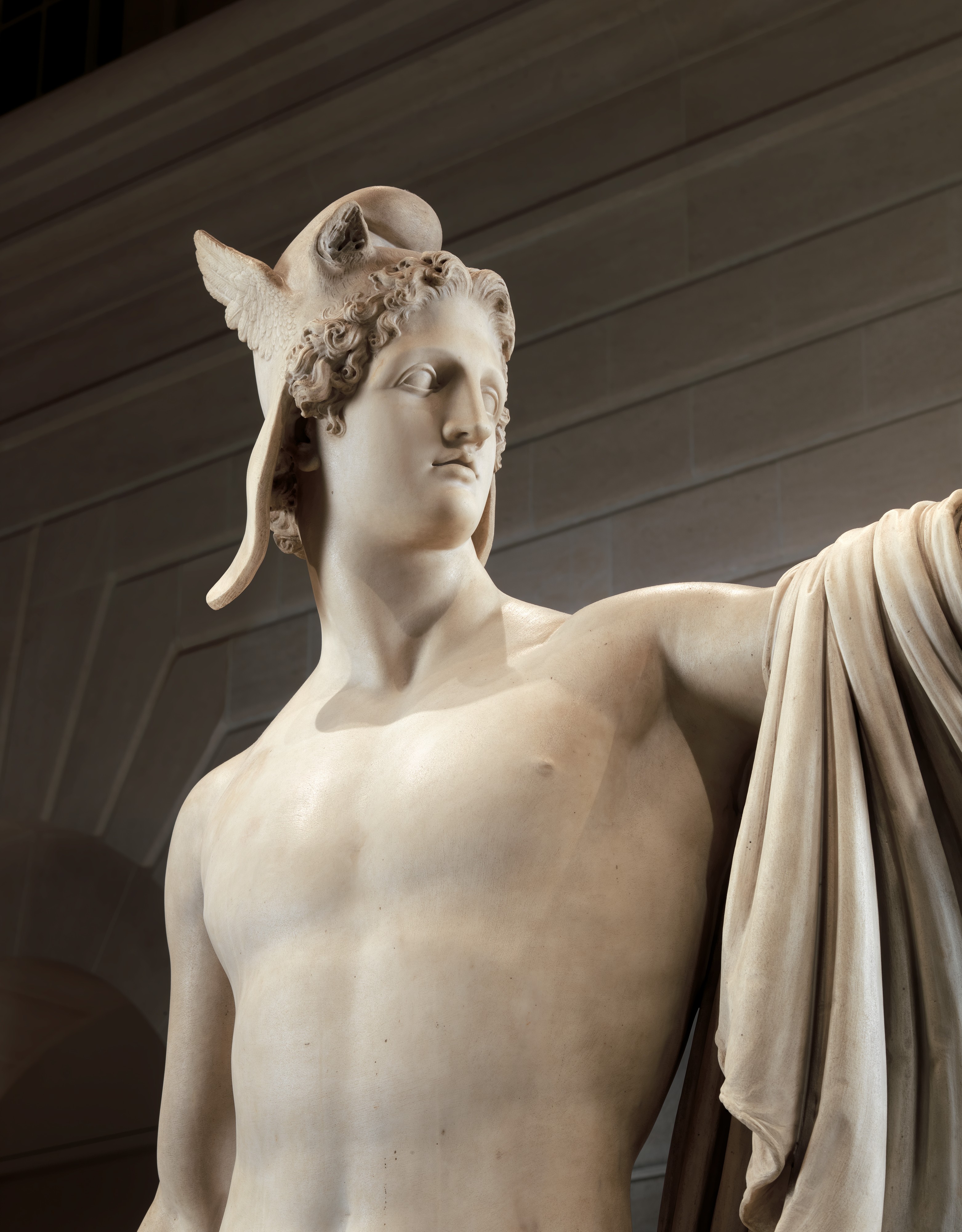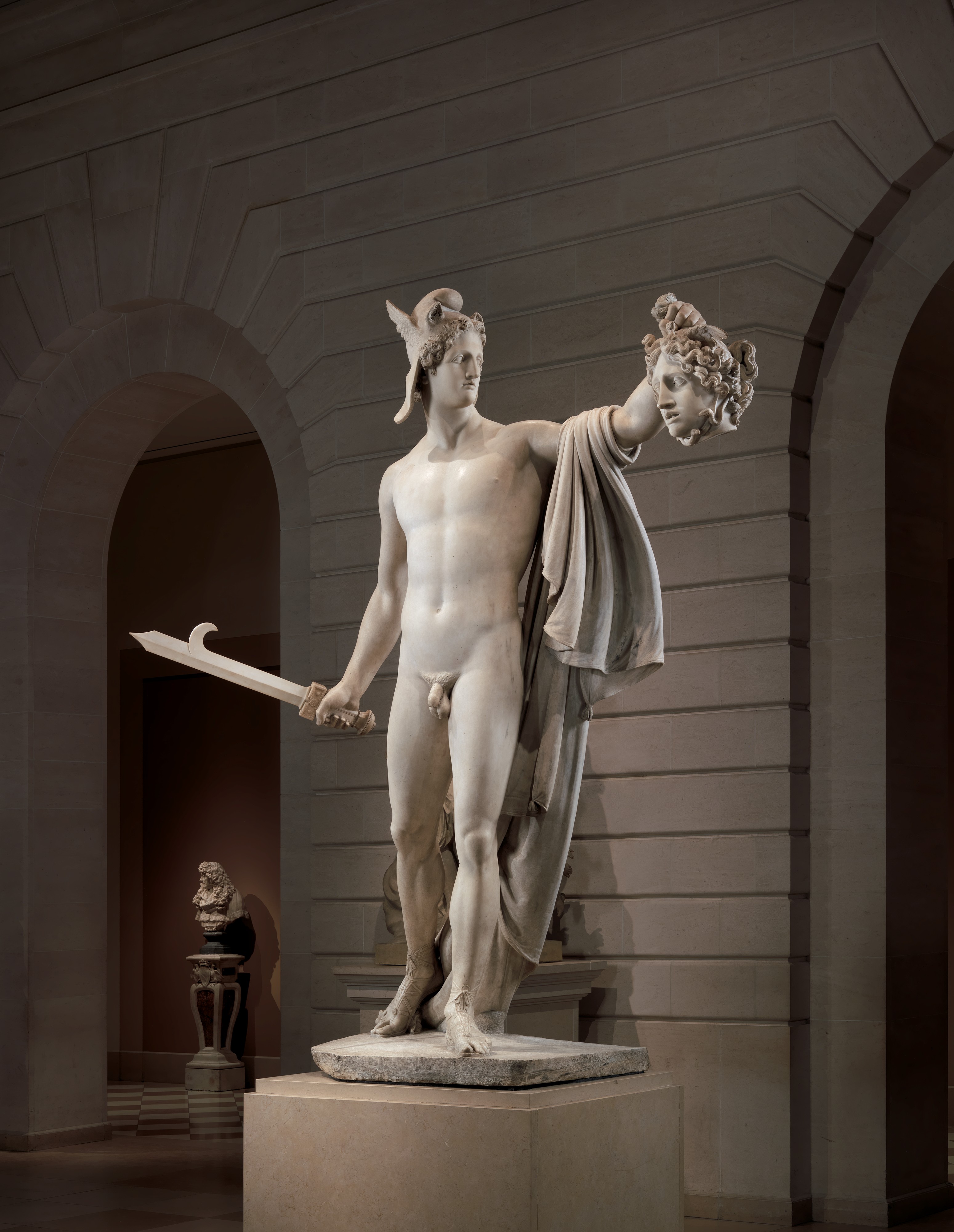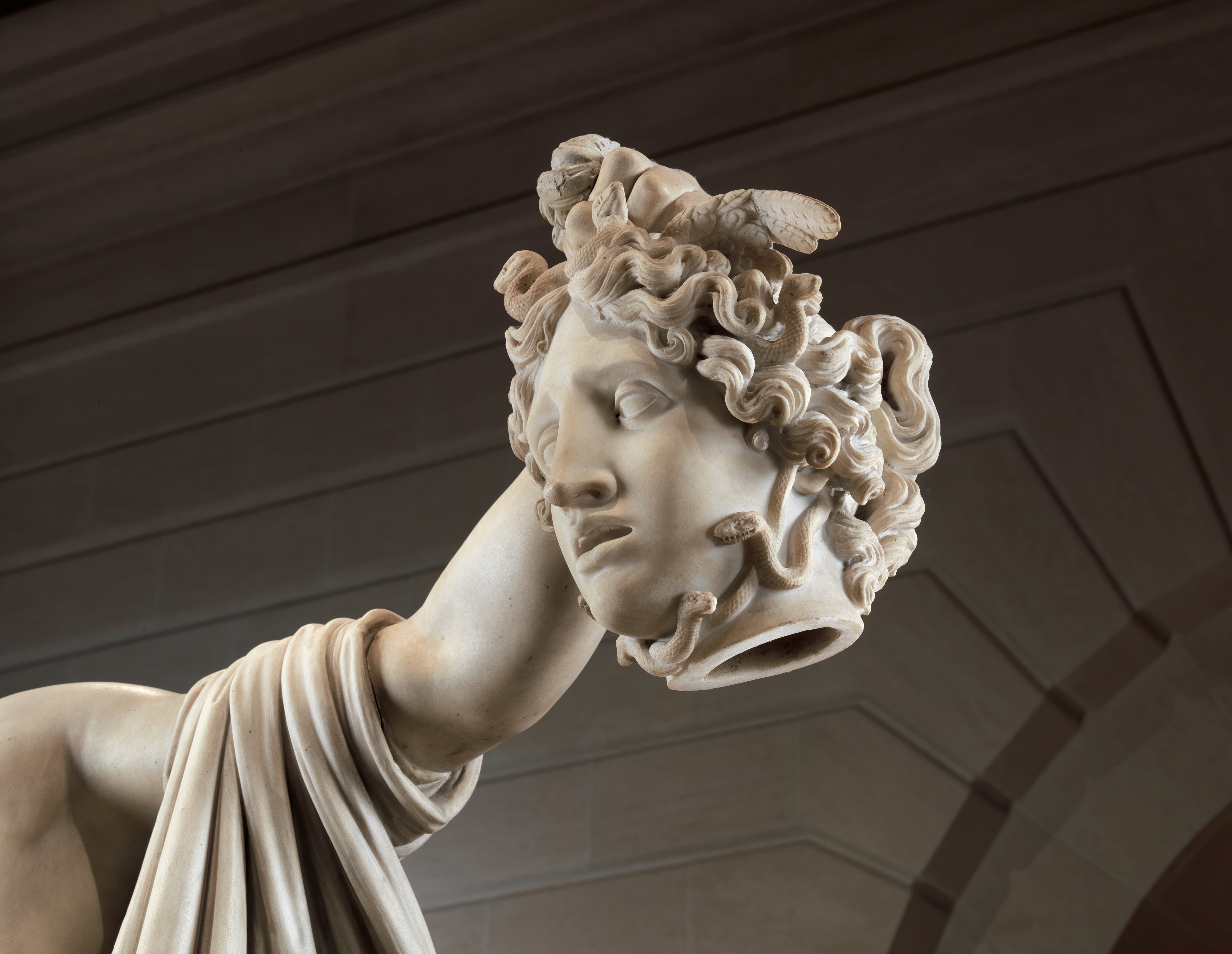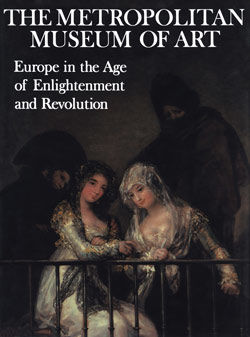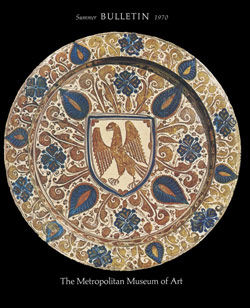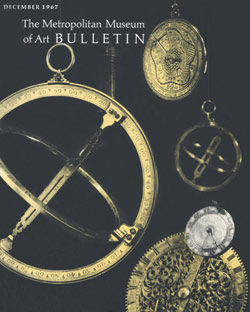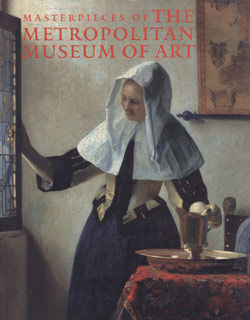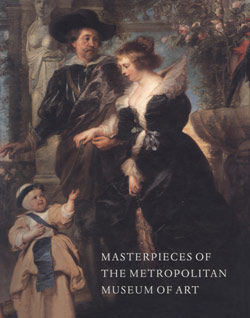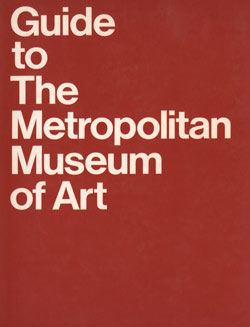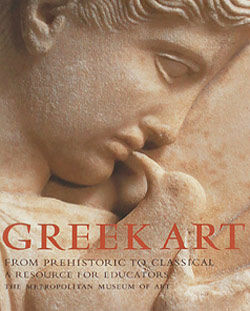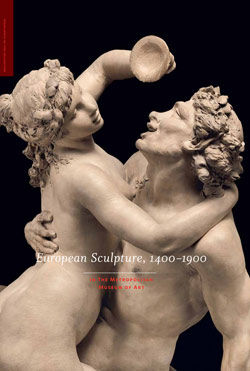Perseus with the Head of Medusa
Antonio Canova Italian
Commissioned by Count Jan and Countess Valeria Tarnowski
When Countess Valeria Tarnowska first met the sculptor Antonio Canova, on December 5, 1803, she recorded the event in her diary: "I saw the great Canova! I saw him amidst his glory, surrounded by his masterpieces — simple, modest, he seems to ignore the fact that he has become immortal." [1] Canova was universally acknowledged to be the preeminent sculptor — for many, the dominant artist — of his era. Determined to have a work from his hand, the countess negotiated a contract, signed by Canova on April 14, 1804, for a version of the artist’s marble Perseus with the Head of Medusa (1797–1801).[2]
The composition proved to be one of the most important of Canova’s career. It closely reflects his admiration for the art of antiquity and signals his fame as the rival of ancient masters. It was obviously, if freely, based on the Apollo Belvedere, whose loss had been widely mourned in Italy ever since Napoléon’s troops carted it off from the Vatican to Paris in 1797. In its frontality and majestic motion, Perseus’s stance recalls the antique Apollo, but Canova’s hero’s gaze is focused on the severed head of the monster Medusa, which in turn was based on another famous antiquity, the marble mask known as the Rondanini Medusa (Glyptothek, Munich). When finished, Canova’s marble was purchased by Pope Pius VII, who placed it in the niche where the Apollo Belvedere had once stood. Implicit in this act was a championing of contemporary Italian art and defiance of the French conquerors of Italy. The following year, Canova was further rewarded with the post of inspector-general of antiquities and works of art in Rome and the Papal States.
That the sculptor undertook scrupulous, even pedantic, research when planning the Perseus is evident in the label he placed by the finished statue in his studio:
It is said that when Perseus, son of Jupiter and Danaë, was sent by King Polydectes to fight the Gorgons, he received the sandals and the wings from Mercury who loved him especially. These wings he attached to the prodigious helmet he received from Pluto, which made invisible whoever was wearing it. Many authors describe this helmet as a Phrygian cap, with two ears; in fact, one sees one like it worn by a Pallas (once in the collection of Cardinal Gualtieri) because this goddess also wanted to use it on several occasions. It is also said that he received from Vulcan a diamond sickle, which as Hyginus tells, he used to cut off the head of Medusa. The shape of this pointed and hooked weapon is found on many ancient monuments and Homer and other ancient writers call it probably harpé. To explain the meaning of this term, Suidas applied to it the Greek word lancodrépanon, which means sickle-shaped and pointed knife. [3]
Interestingly, Canova omitted the polished shield, in whose reflective surface the hero could view safely the fearsome Medusa, whose face turned men to stone. The sculptor’s label suggests both the zeal with which he combed ancient visual and literary sources for authentic details and background material and also the keen interest of his audience in such facts.
Countess Tarnowska requested a marble version of the Perseus, "in all similar to the other one now in the Vatican Museum" (according to the contract), and the resulting statue was likely based on a plaster cast in Canova’s studio. It was Canova’s practice to model his sculptures in clay and then make plaster copies, which could withstand the rigors of sculptural work. For example, the Museum possesses a lifesize plaster model of Canova’s Cupid and Psyche, which he used as a guide for carving the marble versions now in the State Hermitage Museum, Saint Petersburg, and the Musée du Louvre, Paris.[4] The contract further stipulates that the countess’s version should be "a statue of Carrara marble carved by [Canova]." By this point in his career, Canova had a large workshop to assist him, but most patrons presumed that the sculptor would finish the work himself (in most cases, assistants would work the marble up to a certain point, copying the plaster model, and the master would give it the finishing touches). The Museum owns a lifesize version of Canova’s Paris, for instance,[5] which Canova left unfinished in his studio at his death; the following year it was completed by a studio assistant for Robert, Viscount Castlereagh, second Margrave of Londonderry. In a list of his best-known works that Canova dictated in 1816, he refers to the present sculpture as "Perseus — replica of the first one, with some small variations, shipped to Poland to Countess Tarnowska." [6]
Some scholars have proposed a different history of this commission.[ 7] In his article of 1821, Count Potocki states that the original version made for the pope had a flaw in the marble and that Canova carved a second version for him, giving the first to Countess Tarnowska.[8] His account is unlikely, as neither marble has any visible flaws and the language of the contract has the usual proviso that Canova should make a copy of an existing work by his own hand. The Museum’s Perseus is indeed slightly different from the one in the Vatican, as Canova himself noted. There is a slight slimming of the torso and a more pronounced swing to the drapery; moreover, the marble strut that Canova inserted under the hero’s left arm in the Vatican marble he apparently had the confidence to omit from the second version. Such stylistic streamlining and technical improvement characterize many of the artist’s replicas.
Recent scholarship has made it possible to construct a more detailed history of the Museum’s sculpture once it left Canova’s studio. A letter from a Viennese banker named Franck to Canova in early summer 1806 indicates that the Perseus was en route to Poland, so it must have been completed by then.[9] Although it was originally intended for the Tarnowski Palace in Dzików, it ended up at the countess’s father’s estate in Horochów because of concern that it might be too heavy for the palace floor. Sebastiano Ciampi says that it was at Horochów by August 1806.[10] Evidently, the statue’s weight preoccupied the sculptor, for he wrote to the countess in 1807 that he sent with the statue a plaster head of Medusa, lighter than the marble one. If she worried about stress on the arm, then she could replace it with the plaster and put a candle in the hollowed-out marble version where it could gleam, if she so chose, as a ghostly table ornament.[11] This playful suggestion that the Medusa had decorative potential reminds us that Canova often recommended viewing his statues by candlelight in order to appreciate fully the quality of their surfaces. Clearly he considered the head a discrete element that could stand on its own, unlike the one in Benvenuto Cellini’s famous Perseus (Piazza della Signoria, Florence), which is shown dripping blood.
Footnotes:
1. Tarnowska 1803 – 4/1924 – 26, p. 154.
2. This contract was acquired by the Metropolitan Museum in 1967 (acc. no. 67.169). It was published in Raggio 1969, an article that gives the fullest account of the statue to date.
3. Cicognara 1823 – 25, vol. 7, pp. 154 – 55, n. 1; the translation is taken from Raggio 1969, p. 212, n. 31.
4. Acc. no. 05.46.
5. Acc. no. 2003.21.2.
6. "Altro Perseo replica del primo con qualche piccola variazione, inviato in Polonia alla Sig. Contessa Tarnowska"; Canova 1817, p. 10; reprinted in D’Este 1864, p. 373. Translated in Raggio 1969, p. 210.
7. Notably, Dominika Wronikowska (see Wronikowska 2002). See also Mikocka-Rachubowa 2001, vol. 2, pp. 28 – 38.
8. Potocki 1821, p. 75.
9. Franck to Canova, July 9, 1806, Museo Civico, Bassano del Grappa (2-XLVI-12-629); quoted in Bassi 1973, Appendix, p. 125, doc. no. 14. See also the letters from Giovanni Torlonia to Tarnowski in the Archiwum Pan´stwowe, Cracow, MS. ADzT. 287.
10. Ciampi 1818, p. 15.
11. Canova, Rome, February 21, 1807, to Countess Tarnowska at Dzików (Muzeum Narodowe, Warsaw, MS 63). First published in Grottowa 1957; reproduced (in facsimile) in Kaczmarzyk 1969a, pp. 109 – 11.
#86. Perseus with the Head of Medusa, Part 1
-
86. Perseus with the Head of Medusa, Part 1
-
86. Perseus with the Head of Medusa, Part 2
Playlist
Due to rights restrictions, this image cannot be enlarged, viewed at full screen, or downloaded.
This artwork is meant to be viewed from right to left. Scroll left to view more.


